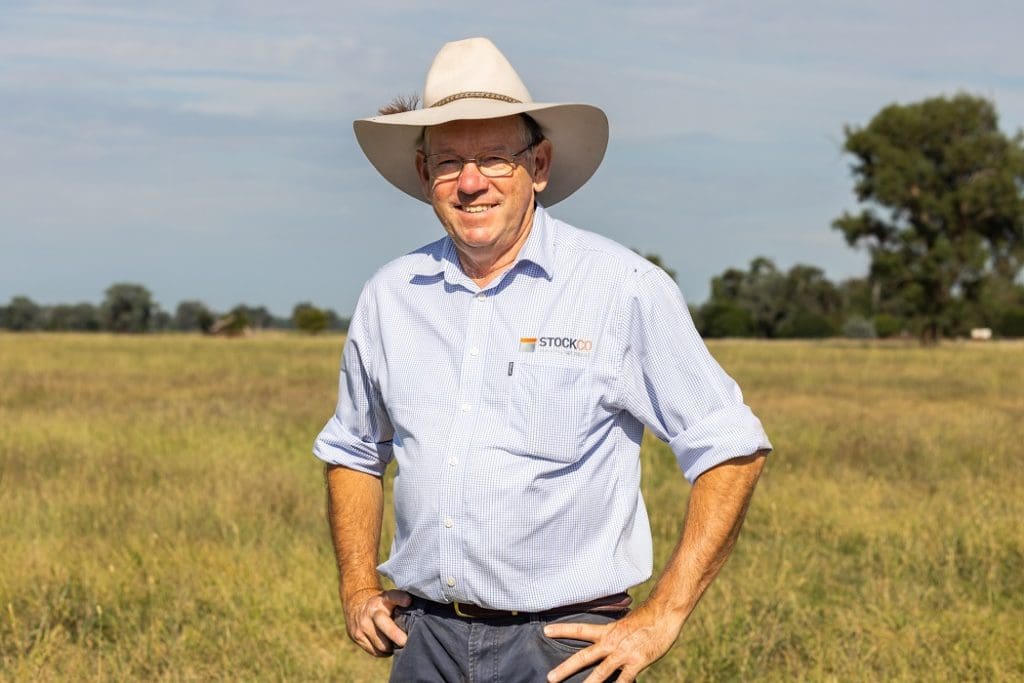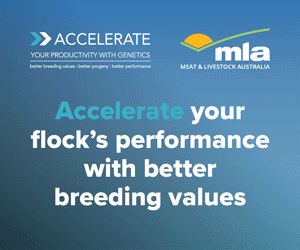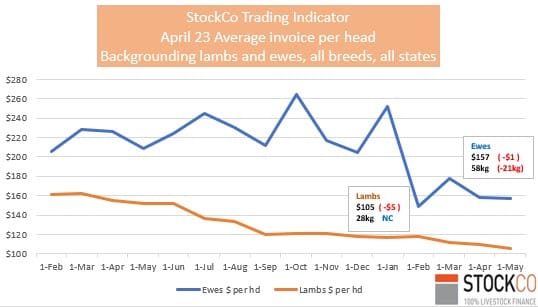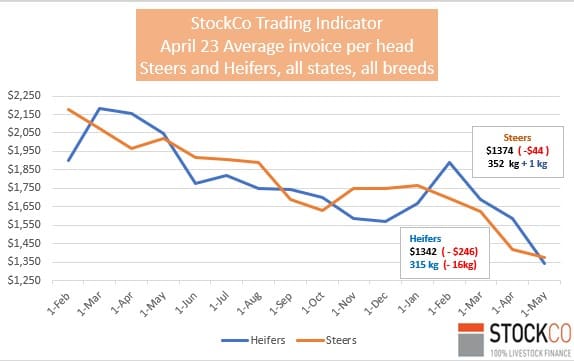
Chris Howie.
SHEEP and cattle opportunities, reports on recent industry events and trends, and a call to arms for the live sheep trade feature in Chris Howie’s regular wrap this week.
Change of jobs and a quick plug
After four years with StockCo, I have taken the role of general manager with the RMA Network supporting the membership of independent stock and station agents across Australia.
The amount of change we have seen in the livestock industry in four short years has really shown the benefit of specialised livestock finance allowing producers to capitalise on the excellent seasons after the drought. With three fantastic trading years, the price reset in December has definitely created some trading shortfalls; however, the current prices now provide an excellent re-entry point for those that have had a break to the season.
My time with StockCo has allowed me to maintain long-term producer, agent, processor, feedlot and client relationships established over 30 years as an operational agent as well as enhancing my access to industry level conversations. It has also provided the direct engagement with producers and agencies that has seen the StockCo offering simplified and enhanced. Looking forward the new ownership by Heartland Group will see new products released to meet the ever-growing financial needs of the livestock and red meat industry.
The exciting part for me is the RMA Network has a solid foundation of quality professional agents and my charter is to continue to develop opportunities for those agencies and their clients. I will still be doing the monthly update with Beef and Sheep Central and this will retain the full spread of agency, client, industry and end user input as everyone is use too.
Sheep expo patronage encouraging
In attended the SA Sheep Expo last week and spoke to Samantha Neumann, Livestock SA board member who took holidays to attend. After some COVID interruptions, the event has taken off in 2023, with 142 attendees ranging in age from 6-23 years. The excitement and passion of these young people about the sheep industry is quite infections and their desire to learn really shows the benefit to the wider sheep and wool industry in creating the next generation of leaders. Anyone with industry experience looking to volunteer next year will be of great assistance in allowing this event to grow.
On the South Australia and Victorian season
I spoke to Michael Phelan, StockCo Victoria/Tasmania and Joe Scammel, Spence Dix & Co, Clare SA. Both have said most areas have a good start, with Mick commenting the forecast 7mm of rain turned into 70mm in the western districts and caught many cropping programs on the hop. He said some areas were a bit wet with retained moisture profile from last year, although grass growth has been very good.
 Joe followed on with that lambing numbers are looking very good. He said lambs are strong with the sun on their back and ewes in many areas have grass in front of them already. Mick held the same view for his patch, as it had not become cold yet and the grass is really powering on.
Joe followed on with that lambing numbers are looking very good. He said lambs are strong with the sun on their back and ewes in many areas have grass in front of them already. Mick held the same view for his patch, as it had not become cold yet and the grass is really powering on.
Michael went onto say that the season in his area has provided a rare opportunity for an Autumn trade – perhaps some June/July drop lambs or scanned in-lamb ewes to lamb down and sell. “We don’t see it very often but the break does lend itself to a 3 or 4 month turn over job,” he said.
Andrew Peadon, Barlow and Peadon Schute Bell, Trangie and Dubbo said the 50mm of rain last weekend slowed numbers up a bit for the sheep and lamb market. Lamb prices were $8-$10 easier; however, heavy mutton held firm with rates from $3.80-$4.20 and showing positive signs for May.
Andrew said he had been talking to several of his clients in the Forbes and Condobolin areas and the impact of the floods has put their operations behind by two years. Many of the lucerne pastures have been wiped out and need to be resown, which is putting a very big hole in finished lamb numbers. In turn, this has also had a direct impact on store lamb and scanned in-lamb ewe demand and prices.

It’s worth doing the sums on Merinos before selling
I touched base with Mark Hedley, AWN state wool manager for NSW and QLD. Mark said the Merino fleece market is reasonable when compared with 12 months ago. Fine wool is down a little, but broad wool is up. As all of us old woollies know we are at the whim of international demand, finance and exchange rates when it comes to wool prices but through the COVID time wool remained remarkably resilient.
We both agree it is well worth doing the sums on shearing your Merinos before selling them. Understanding the prem and 50mm-plus values is extremely important for growers and agents if you want to maximise returns.
A couple of very interesting stats from Mark, give or take a percentage point, were that Australia provides 73pc of the world’s 21 micron and finer apparel wool; 88pc of the elite 18 micron and finer and only 8.7pc of the 25 micron and higher (crossbred). He also noted that many lamb producing countries have been storing crossbred wool in hope of a price resurgence. Some Irish farmers have started to burn it to make room for fodder in their sheds.
When all said and done, we both agree that Merino sheep still give the best results when spread across a cropping, lamb and wool enterprise or pastoral grazing model.
New cattle processing capacity coming
There is new cattle processing activity ready to rock and roll. TFI Murray Bridge, AMG Cootamundra and O’Connors Pakenham are all set to commission or realign their facilities in the very near future. The investment from many of the meat processors over the past 3-4 years has been extensive and bodes well for producers and the continued development of international export demand. I am not suggesting you change your sale program, but it is a positive move in opening up more processing capacity for the cattle industry.
Sam Bartlett, Adcock and Partners, Quilpie said the northern and southern cow pricing is moving in opposite directions. Northern processors seem to have plenty booked and grids have eased, although we are just starting to see the southern enquiry improve heading into winter with a couple of price lifts and southern buyers ready to drift north as happens most years.
Andrew Peadon, Barlow and Peadon Schute Bell, Trangie and Dubbo said last week’s Dubbo sale was very short on quality with most agents only having two or three pens of trade quality cattle. Cow prices trended a bit easier but this is more of a market fluctuation than a correction. The tail of the ‘northern trade’ cattle are still drifting through. Although Andrew said cows purchased at $1600 that have turned off two calves and are being hooked at $1300 have made the venture north well worthwhile. PTIC heifers at the last Dubbo store sale were hard work and with feed a bit short and seem to be great value for those with some grass.
Caught up with Kelvin Hancey, the long-time manager for Elders Broome in WA. The Kimberley flood clean-up is still underway with many of the impacted stations struggling to clear silt without getting bogged. The water table is very high and if a grader or excavator breaks through the crust it is hard work to get a 30 tonne lump of steel out. Fencing is also a massive job on top of mustering starts for the selling season on most stations.
When speaking to Kelvin, only one export order for Broome was on the cards at $3.40/kg lwt for lights and $3/kg for mediums into Malaysia compared to the $3.60/kg odd at Darwin. Export cows 380-400kg are at $2.40/kg and the domestic cow hooks job in WA is $2.40-$2.60/kg lwt equivalent with about 60 cents freight to consider. The Fitzroy low level crossing opened to cattle trucks with a permit this week allowing stations to access markets again which is good news.
Upgrade your herd – Pregnancy-tested in-calf females seem to be well undervalue at present with many areas still a bit short on cattle feed. I know I have said this before but why not turf your old cows, by a good line of PTIC heifers or second calvers and potentially put some money in the bank.

WA live export voice getting louder
The voice of industry is getting louder and the short comings of the quasi fact-finding mission seems to be faltering in its perceived plan having to make changes on the fly.
The Livestock Collective has created a voice of advocacy and understanding and it is well worth looking at their website with a Virtual tour of a live export ship.
Make a submission about the value of live export to your business. Attend the Sheep Producers Australia submission webinar to help you do a sunmission.
I am not here to tell you what to say, but it is important you base any submission on fact, not emotion. Hard line, provable numbers or events showing the negative $$ impact and its consequences on your business. All parts of industry can submit. Carriers, feed mills, agents, animal health sales even the tuck shop at the Fremantle wharf. There are also separate sessions for individual industry groups.
Monday May 8th @ 6pm AWST – Voices of Live Export Submission Preparation Webinar
Friday May 12th Public Virtual Forums (AEST)
11am – 12pm – Broadcast Session 1 (All invited)
12.30pm – 1.30pm – Discussion Forum – Animal Welfare
3pm – 4pm – Discussion Forum – Supply Chain (Shearers, vets, transport operators, fodder growers and operators, feedlot operators, stockpersons and sheep buyers etc)
4.30pm – 5.30pm – Discussion Forum – WA Farmers (1 of 2 sessions)
Monday 15 May – Public Virtual Forums (AEST)
11am – 12pm – Broadcast Session 2 (All invited)
12.30pm – 1.30pm – Discussion Forum – Exporters and ports
3pm – 4pm – Discussion Forum – WA Farmers(2 of 2 sessions)
4.30pm – 5.30pm – Discussion Forum – First Nations People, Government, researchers, and broader community Wednesday May 31st @ 10pm AEST – Submissions CLOSE
Michael Laidlaw, Regional Manager for RABO Mid North and Eyre Peninsula in SA flicked me a copy of the RABO commodities report for May. Very comprehensive and when combined with reports from Matt Dalgleish at EP3 and Mercardo. It does allow producers and agents to develop a very sound understanding of international drivers for Australian primary production. It’s worth a read while having a beer, wine, cordial or the morning constitutional.
Food for thought – At StockCo we are getting a considerable amount of enquiry from agents and potential buyers looking to buy PTIC females and needing terms from the vendor because it is another 3 or 4 months before the bullocks – feeders will be sold. Most vendors following the price correction are looking for their proceeds straight away so this is not an option.
A simple solution is using your existing cattle to pay for the purchase with a StockCo Stock Advance and then pay that off with the sale of your steers or feeders. Worth considering if it is going to help maximise the opportunity at current prices.
Opportunities
Scanned in-lamb ewes
Mutton to improve – still worth a crack
PTIC Heifers and Cows
Use the equity in your existing herd / flock to fund an opportunity.
Buying opportunities always appear in June through lack of feed somewhere.
Keep feeding your ewes and cows with LAF / CAF as the green doesn’t hold a lot of energy at this time
Supporting WA live export industry



HAVE YOUR SAY